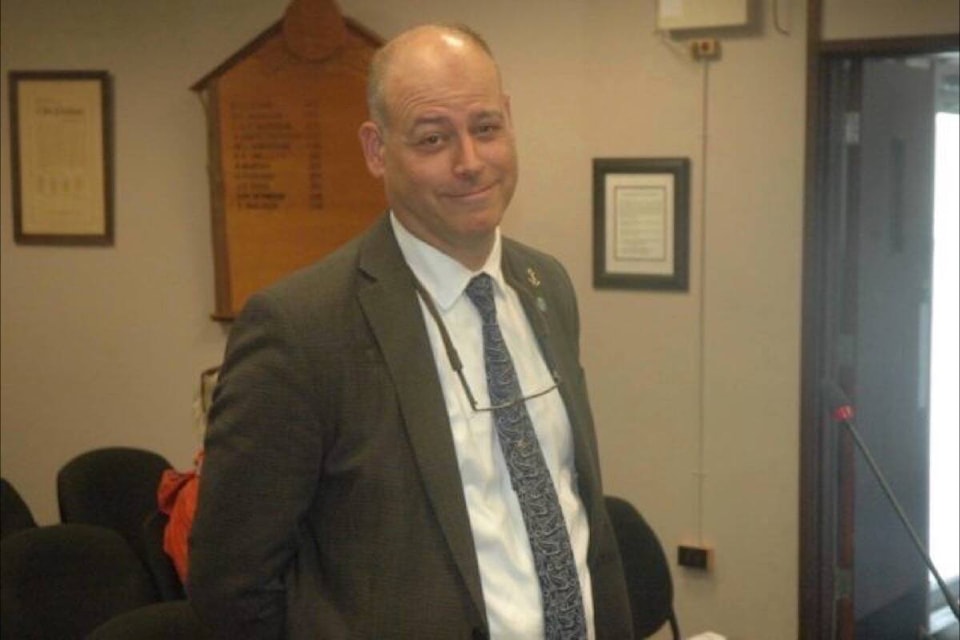North Cowichan is considering using aeration to help deal with Quamichan Lake’s ongoing problem with toxic blue-green algae blooms.
Council decided at its meeting on Sept. 21 to hire a consultant to assess the costs and benefits of aeration, in which air would be used to oxidize the approximately 32 tonnes of releasable phosphorus in the sediment at the bottom of the lake, which is a key driver of the lake’s poor water quality and the prolific algae blooms.
Once the consultant has finished that work, council directed staff to prepare a report on the most beneficial management options for mitigating the lake’s blue-green algae blooms.
But Dr. Dave Preikshot, North Cowichan’s senior environment specialist, cautioned council that, at the end of the day, the consultant may conclude that aeration is not a favourable option.
RELATED STORY: OPTIONS PRESENTED FOR BLUE-GREEN ALGAE PROBLEM IN QUAMICHAN LAKE
“I want to see more detailed information on it before I can give solid advice to council and the community,” he said.
There had been at least four reported dog deaths around Quamichan Lake in 2016, and all are suspected to have been caused by ingesting toxic blue-green algae from the lake.
North Cowichan decided at the time to set up the Quamichan Lake Water Quality Task Force, consisting of staff and council members, along with water specialists, to study and seek solutions to the ongoing health issues related to the algae.
The task force concluded the nutrients that are causing the algae outbreak in the lake are coming mainly from a number of sources; including urban runoff, and runoff from nearby agricultural lands, construction areas and logging sites.
Preikshot was contracted by the municipality in 2018 to design a water-quality sampling program and conduct monitoring activities in order to establish baseline conditions for several water-quality parameters in the lake.
Preikshot said at the time that the control of phosphorous in Quamichan Lake is most likely to be best achieved using one, or a combination of a number of options.
RELATED STORY: NORTH COWICHAN TO DETERMINE BEST MEANS TO DEAL WITH QUAMICHAN LAKE’S ALGAE PROBLEM
They included aeration, chemical treatments, flushing the lake with stored and/or diverted water, mitigating in-flowing water using zeolite and limestone in creek beds, and dredging the bottom of the lake.
But Dr. Maira Mucci and Limno Solutions, who were hired by the municipality last year to assess the lake’s sediment, ruled out most of the options as being impractical and/or too expensive and considered aeration as a possible solution, but concluded its effect on phosphorus depends on the iron available in the lake’s sediment.
Preikshot said there are different types of aeration that could be used in Quamichan Lake — depending on what the consultant that will be hired concludes — from just putting bubbles in the lake to pumping water out of the lake, super-oxygenating it, and pumping it back in.
Asked by Coun. Kate Marsh what the expected costs of preparing the report would be, Preikshot said that he believes it will be in the range of $25,000, and it would likely come from the municipality’s Quamichan Lake reserve fund which currently has approximately $500,000 in it.
Preikshot said the costs of aeration would depend on what type of process is chosen, and that’s if aeration is used at all.
“But these options aren’t cheap, and we’ll need the support of other government agencies,” he said.
Mayor Al Siebring said he and senior staff have been in contact with a number of provincial government ministries recently and they are taking an interest in Quamichan Lake and its water issues.
“We’ve made some connections and we’re hoping to squeeze some money out of the province when we get down to building the infrastructure that’s needed,” he said.
robert.barron@cowichanvalleycitizen.com
Like us on Facebook and follow us on Twitter
